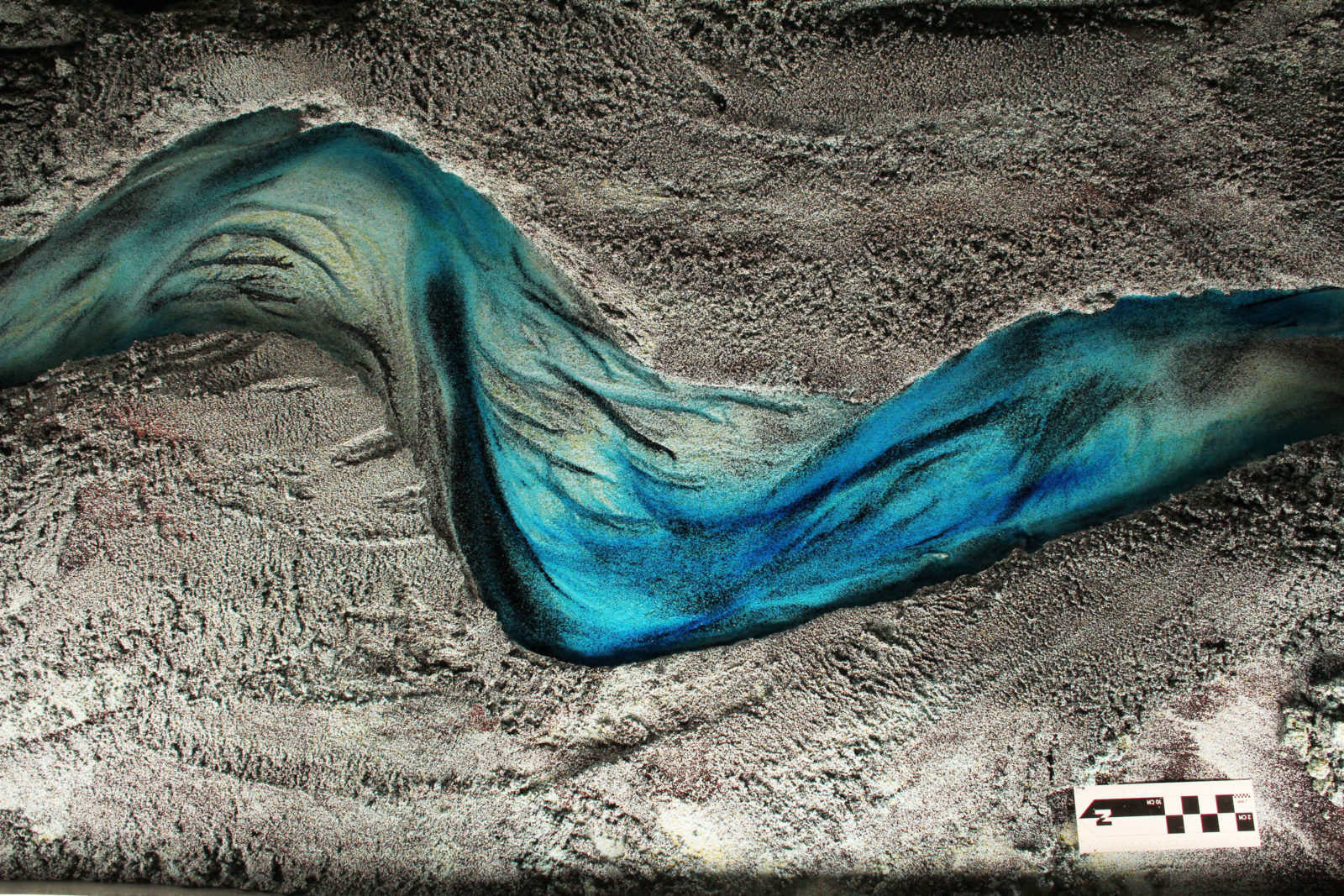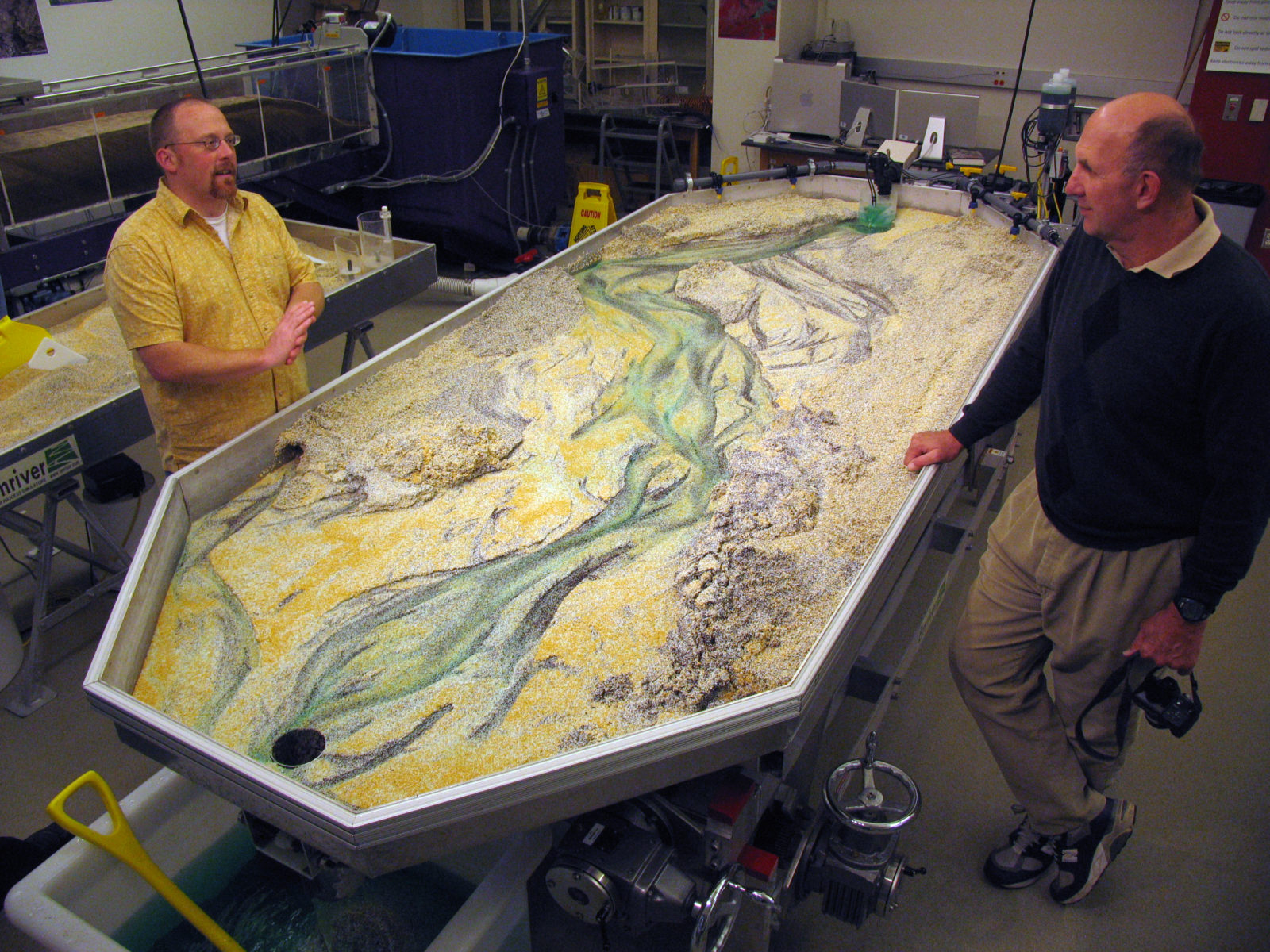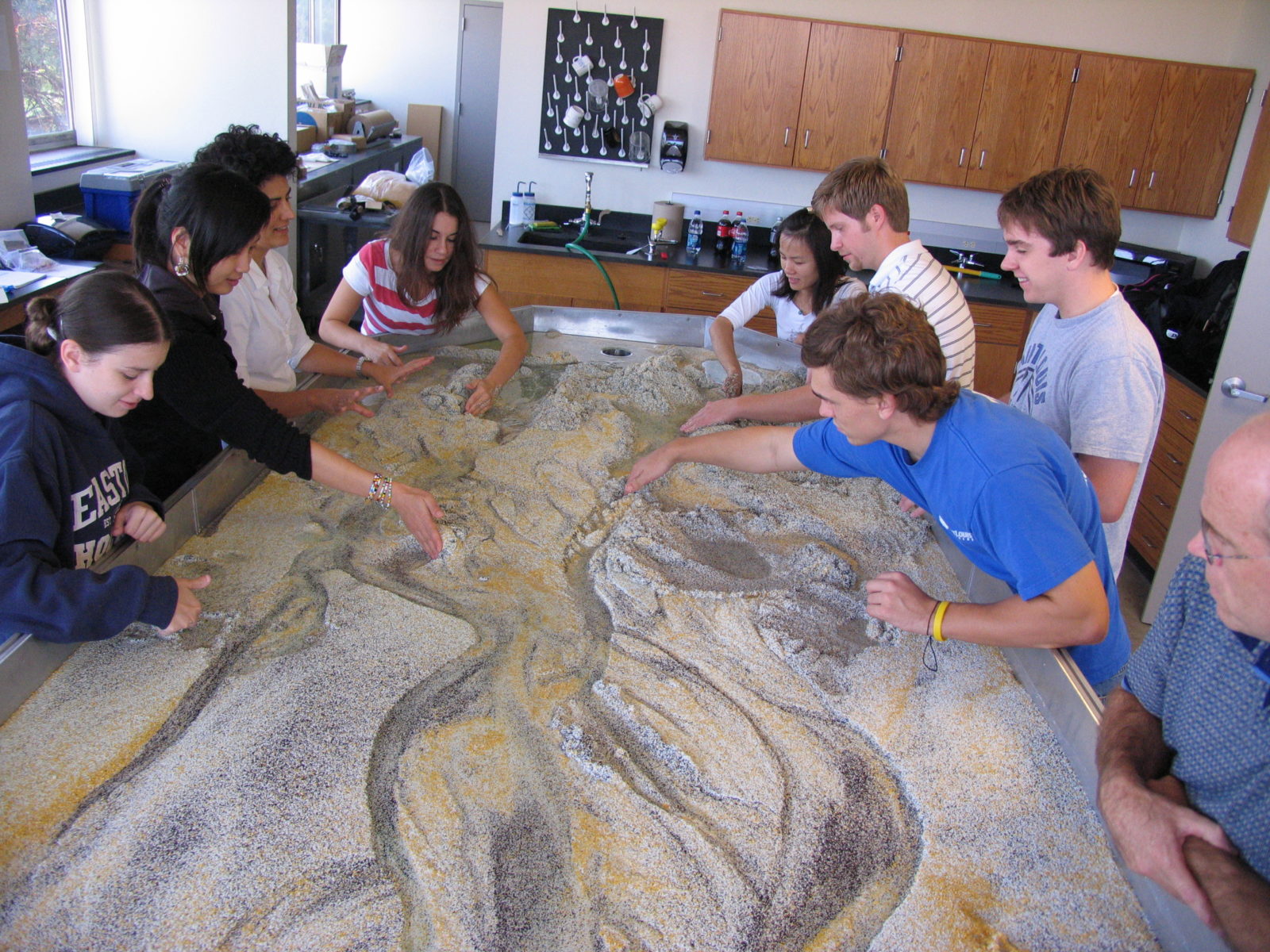Little River Research & Design
An organization focused on river science education to meet challenges of the Anthropocene
The continuous interaction between abstract models and natural phenomena is a hallmark of the Anthropocene. At this juncture, art and science become indistinguishable. The educational models of Little River Research & Design reveal beautiful meander scars in finely gradated artificial sand. At the same time they offer hands-on experience with fluvial geomorphology. Located in Carbondale, Illinois, this globally oriented company joins Field Station 4 as part of the exhibition “Seasonal Pulse,” bringing into the gallery an acutely material consciousness of the relentless processes of change that shape the Mississippi River. Here LRRD’s Steve Gough and Anna Durrett describe what makes the models so apt at conveying this knowledge.

Sitting on the edge of the Mississippi River floodplain in Southern Illinois, Little River Research & Design (LRRD) has a 25-year history of applying river science to human-river interactions, including fisheries habitat management, major infrastructure, and sustainable urban stormwater design. LRRD was a pioneer in bioengineering, the use of fluvial geomorphology and plants in lieu of concrete, for many successful urban river projects.
University professors with an Em4 model. By Little River Research & Design
For over a decade, LRRD has focused on education as a way to teach both general science and influence river ecosystems stakeholders. They have developed moveable-bed models, some of them ultra-portable, that show river behavior in ways not otherwise possible. These models use a special plastic media developed through extensive research and development. This media performs much better than rock-based sand and is color-coded by size. Since rivers always sort particles by size, this allows the visualization of many river processes in ways no other method can.
University students using LRRD’s four-meter model, the Em4. By Little River Research & Design
Sedimentary processes—erosion, transport, and deposition—shape river systems. Most of these are invisible to the human eye; they take place in murky, swift water during violent floods. We do not fully understand them, nor can we accurately model them with numerical methods. But they are fully visible in LRRD’s models, and users can both observe and manipulate them in real-time.
With more than 450 of LRRD’s models sited in 18 countries worldwide as of this writing, they have a significant influence on education about river processes. In Southwest India, portable models are used to educate local people about flooding, which claims many lives in the region each year. Because the models are inherently interesting and dynamic, they are incredibly effective for stakeholder education.
People are strongly drawn to the models for many reasons, from scientific curiosity to the beauty of the mixed-color particles moving in water laced with filaments of blue dye.
LRRD’s models are a powerful blending of art and science. They are a mesmerizing, hands-on experience. The appealing sights and experiences they provide duplicate the sediment transport processes that form and maintain the morphology of rivers. Plastic media in the model interacts with modeled structures: rock revetments, bridges, culverts, wing dams, and even simulated vegetation, in the same way sand and gravel do in the real world. The models are used to train and inform roadbuilders and maintainers across the United States.
These models compress time and space, which can be further altered with time-lapse photography. In this way, the building of a large river delta, a process that might take many hundreds of thousands of years, can be visualized in a few minutes. The varied layers of sediment created, and easily seen with the color-coded media, are the same as one would see in a real river delta.
These models are also useful for the study of river and floodplain hydrology. Users can simulate larger climate-change-induced floods and also use dye and other means to study how groundwater moves through river floodplains, and how it carries pollutants.
LRRD’s facility in Carbondale, Illinois is equipped for state of the art prototyping, including physical computing, and video production. They are excited to collaborate with the Mississippi. An Anthropocene River project to explore new means for interdisciplinary research and education.


